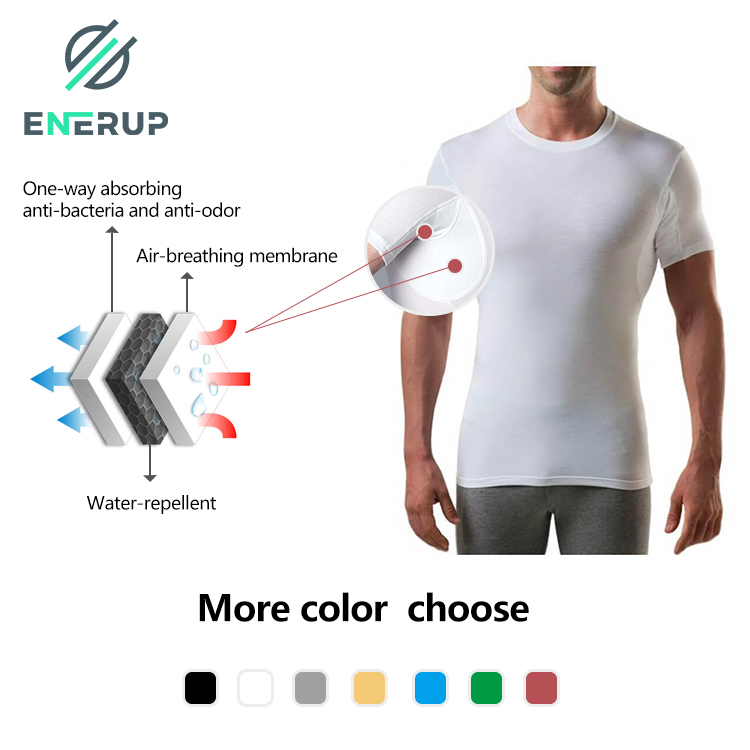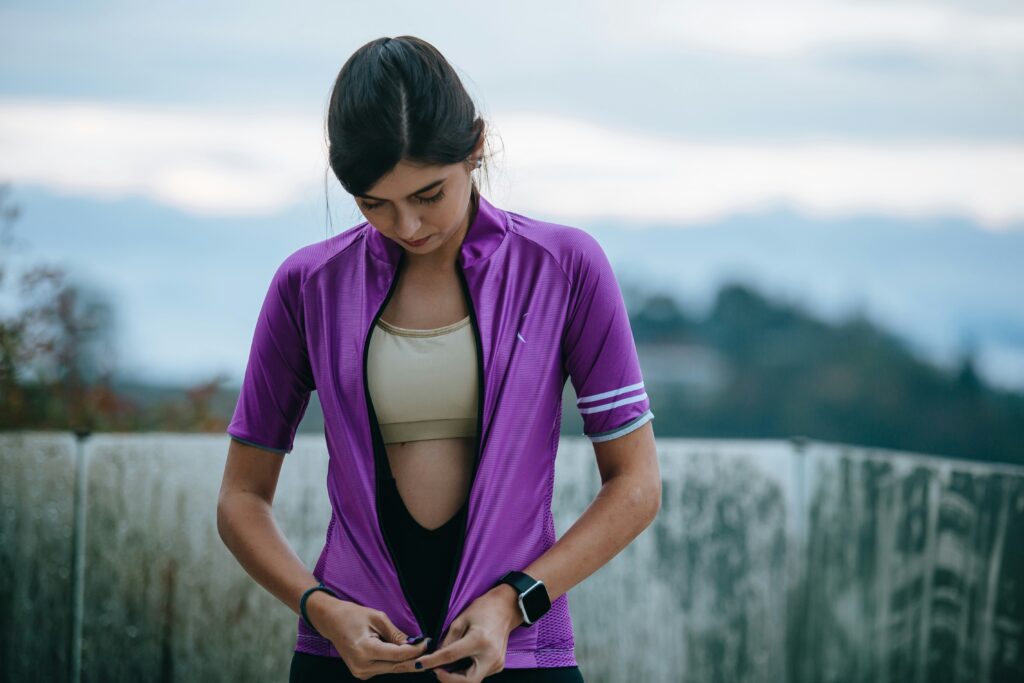Exploring the Essentials of Cycling Jerseys
When considering cycling jerseys, it is crucial for cyclists to recognize the distinct features that differentiate these garments. Crafted with specialized materials and construction methods, cycling jerseys are tailored to meet the specific requirements of the sport. Over time, there has been a notable progression in bike jerseys in terms of enhanced performance and increased comfort.
What Makes a Cycling Jersey?
Materials and Fabrication
Cycling jerseys are crafted from advanced materials that prioritize breathability, moisture-wicking, and aerodynamics. High-tech fabrics such as Lycra, polyester blends, and microfiber have revolutionized the construction of modern bicycle jerseys. These materials offer a snug fit while allowing for freedom of movement, crucial for cyclists during intense rides.
The Evolution of Cycling Jerseys
Over time, the design and functionality of cycling jerseys have undergone remarkable transformations. From long-sleeved woolen jerseys to lightweight, breathable alternatives made from cutting-edge materials, the evolution has been driven by the pursuit of improved performance and comfort. Furthermore, cycling jerseys have transitioned from being merely functional necessities to making a fashion statement while incorporating state-of-the-art technology.
Why Tightness Matters in Cycling Jerseys
The Basics of Fit and Function
The snug fit of a biking shirt is not just about aesthetics; it serves a critical purpose in enhancing performance and comfort. A well-fitted jersey prevents excess material from gathering and rubbing against the skin during extended rides, reducing the risk of chafing or irritation.
The Science of Snug: Reducing Drag and Enhancing Performance
Aerodynamics play a pivotal role in determining the tightness of cycling jerseys. Scientific research has demonstrated that tighter-fitting clothing reduces air resistance during races, contributing to improved speed and endurance for cyclists. Studies have shown that by optimizing fabric shapes on specific areas such as arms, air resistance can be reduced by up to 8%, highlighting the tangible benefits of a snug fit.
By understanding these fundamental aspects of cycling jerseys, cyclists can make informed decisions when selecting apparel that aligns with their performance goals.
The Role of Aerodynamics in Cycling Jersey Design
Understanding the significance of aerodynamics in the design of cycling jerseys is crucial for cyclists aiming to optimize their performance. Aerodynamics directly impacts a cyclist’s speed and endurance, making it an essential consideration in the construction of cycling apparel.
Understanding Aerodynamics in Cycling
The Impact of Air Resistance on Speed
Aerodynamic efficiency is paramount in cycling, as air resistance can significantly impede a cyclist’s speed. When riding at high velocities, the force of air against the body and clothing creates drag, which hinders forward motion. This resistance can be particularly pronounced during sprints and descents, where minimizing drag becomes imperative for maintaining momentum.
How Cycling Jerseys Minimize Drag
Cycling jerseys are specifically designed to reduce drag and enhance aerodynamic performance. Through meticulous fabric selection and strategic garment construction, these jerseys aim to streamline airflow around the cyclist’s body. Tight-fitting bike jerseys are instrumental in minimizing excess material that could flap in the wind, thereby reducing air resistance and optimizing speed.
The Aerodynamic Advantages of a Tight Fit
Scientific Studies and Evidence
Recent studies have underscored the critical role of aerodynamics in cycling jersey design. Research has revealed that well-designed cycling jerseys contribute to improved aerodynamic efficiency by effectively reducing drag. Fabrics with proven drag-reducing properties are strategically incorporated into these garments to enhance their aerodynamic performance.
In a study titled “The Impact of Aerodynamics on Cycling Apparel Design,” it was found that tailored designs and fabric choices play a pivotal role in minimizing drag and improving overall performance. Additionally, another study on aerodynamics highlighted that by altering fabric patterns on specific areas such as arms, significant reductions in air resistance—up to 8%—can be achieved compared to non-optimized designs.
Real-World Applications
The practical implications of these findings are evident in real-world cycling scenarios. Professional cyclists consistently rely on tight-fitting bicycle jerseys to capitalize on the aerodynamic advantages they offer. By embracing cutting-edge apparel technologies rooted in aerodynamic principles, cyclists can experience tangible improvements in their speed and efficiency during races and training sessions.
By integrating these scientific insights into the design process, manufacturers continue to produce cycling jerseys that not only prioritize comfort but also deliver substantial gains in aerodynamic performance.
Comfort and Performance: The Dual Purpose of Tight Cycling Jerseys
Cycling jerseys serve a dual function, prioritizing both comfort and performance to enhance the overall riding experience. The snug fit of these specialized garments not only prevents chafing and irritation but also contributes to improved aerodynamics, ultimately optimizing a cyclist’s speed and endurance.
The Comfort Factor: Preventing Chafing and Irritation
When it comes to cycling apparel, comfort is paramount for riders embarking on long journeys. The role of material and fit in ensuring comfort cannot be overstated. Cycling jerseys are meticulously designed to minimize friction against the skin, preventing chafing and irritation even during extended rides. The snug yet flexible nature of these garments allows for unrestricted movement while effectively wicking moisture away from the body, keeping cyclists dry and comfortable throughout their journey.
Enhancing Performance with the Right Fit
In addition to providing comfort, the proper fit of a cycling jersey can have a profound impact on a cyclist’s performance. Beyond its physical attributes, the psychological benefits of wearing proper cycling attire should not be overlooked.
The Psychological Benefits of Proper Cycling Attire
The confidence instilled by wearing high-performance gear tailored for cycling cannot be underestimated. A well-fitted jersey enhances a rider’s sense of readiness and professionalism, positively influencing their mindset before hitting the road or participating in competitive events. This psychological boost can translate into improved focus, determination, and overall performance on the bike.
Performance Metrics: Before and After Wearing Tight Cycling Jerseys
Various studies have highlighted the tangible improvements in performance metrics associated with wearing tight cycling jerseys. Cyclists who have transitioned from standard athletic wear to purpose-built cycling apparel often report enhanced endurance, reduced fatigue, and improved speed during their rides. By minimizing drag through its snug fit and advanced fabric technology, these jerseys enable cyclists to achieve higher speeds with less exertion.
By understanding how tightness influences both comfort and performance in cycling jerseys, riders can make informed decisions when selecting apparel that aligns with their individual needs and riding objectives.
Choosing the Right Cycling Jersey for You
When selecting a cycling jersey, several factors should be considered to ensure that it aligns with individual preferences and performance needs.
Factors to Consider When Selecting a Cycling Jersey
Sizing and Fit Guidelines
The first and foremost consideration when choosing a bike jersey is the sizing and fit. A well-fitted jersey is essential for comfort, aerodynamics, and overall performance. It should provide a snug yet flexible fit, allowing for freedom of movement while minimizing excess fabric that could lead to discomfort or drag during rides. Cyclists are advised to refer to specific sizing charts provided by manufacturers to determine the most suitable fit based on their measurements.
Material and Weather Considerations
Another crucial aspect in selecting a cycling jersey is the choice of materials, especially in relation to prevailing weather conditions. Lightweight, breathable fabrics such as Lycra, polyester blends, and microfiber are ideal for warm weather, offering excellent moisture-wicking properties to keep cyclists dry and comfortable. On the other hand, jerseys designed for cooler temperatures may incorporate thermal insulation or windproof materials to provide adequate warmth without compromising breathability.
Top Recommendations for Cycling Jerseys
Expert Picks and Reviews
According to insights from various experts in the field of cycling apparel, custom cycling jerseys made from high-tech materials with exceptional moisture-wicking capabilities are highly recommended. These fabrics regulate body temperature, improve aerodynamic efficiency, and effectively wick away moisture during intense rides. Additionally, choosing lightweight, durable, breathable, and sweat-wicking fabrics is crucial for both comfort and performance.
Where to Find the Best Cycling Jerseys
For enthusiasts in pursuit of superior bicycle jerseys, esteemed cycling gear retailers furnish an extensive assortment specifically curated to accommodate various riding styles and preferences. Online portals specializing in cycling equipment grant access to a vast array of distinguished brands celebrated for their dedication to meticulous craftsmanship and innovative design. Additionally, soliciting recommendations from seasoned cyclists or professional trainers can yield invaluable insights into dependable outlets for high-performance cycling apparel.
Harvest SPF Textile Co, Ltd, a company established in 1993, specializes in the research, development, and international trading of healthy and functional textiles. One of their popular products in the Outdoor & Thermal category is the bike jersey.
The bike jersey is lightweight yet durable, making it suitable for all levels of cyclists and various outdoor sports. It is made from a quick-dry fabric that is breathable, ensuring that the jersey never adheres to your skin when you’re sweaty, providing a comfortable experience.
The bike jersey is also certified by RWS, OEKOTEX, WOOLMARK, and Muselin-FREE, reflecting Harvest‘s commitment to quality and sustainability. With over 30 years of experience and more than 30 patents, Harvest SPF Textile Co, Ltd is a leader in the functional textile industry, providing innovative and sustainable clothing solutions.
By considering these essential factors and expert recommendations when choosing a cycling jersey, riders can make informed decisions that cater to their unique riding requirements while optimizing comfort and performance.














